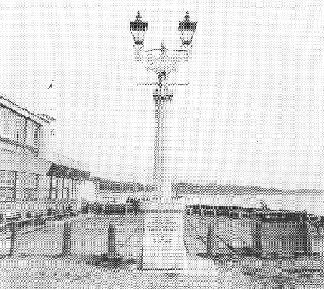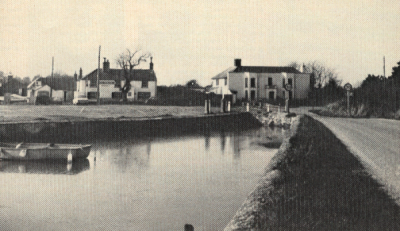
Home -
Foreword -
Georg Philipp -
Piano Business -
Lymington -
Trees -
Related Topics
Alphabetical Links -
Email: family@klitzandsons.co.uk
 |
LYMINGTON

Lymington, built on an Estuary, once had a reputation for smuggling via the busy port. In the 1800s about 4000 tons of salt was produced from the nearby salt marshes
Visitors can reach Lymington by car, coach or train and some visitors still arrive by boat at the Town Quay or local yachtsmen via the Marinas or Yacht Haven.
Passage and Car Ferries run all year to the Isle of Wight and River Boat trips from the quay can take you through the "Howards Way Country", of the long running TV series.
| AREA |  |
MAP |
There is an active League of Friends who help raise funds and serve in the Museum. Bill's wife, Barbara, used to help on regular days each month. An annual programme of events and talks is arranged, and also a Bill Klitz Memorial Lecture is given each year in his memory. There are regular exhibitions held in the museum and a leaflet is available with details. See the map for how to find the building.
While you are in Lymington explore the quaint streets around the harbour and the superb market that runs all day on a Saturday the whole length of the High Street, selling everything you could possibly need and open all year too. Lymington also offers a good selection of Pubs and Restaurants so you are spoilt for choice.
The Church of St Thomas the Apostle is at the end of the High Street where many of the Klitz family worshipped and married. Philip Klitz was the first organist there from 1831 - 1832. He was followed by his brother Charles from 1832 - 1864 and after his death it was taken over by their nephew, Robert Augustus from 1864 - 1887.
Henry Frances Lyte, author of the hymn "Abide With Me", once held the curacy at Lymington, and Philip Klitz married his half-sister - Charlotte Amelia Lyte. Henry Lyte lived at Sway at this time.
In the picture of the Lymington Band 1883, Ivy House, next to the church, is also clearly drawn - where Madge Klitz and her husband John Clark lived.
At the time of writing, the Lymington Band was still going strong, and they discovered our photo of their band in 1883. They contacted me by email asking if I could give them a copy of the photo. I duly sent a copy but it is not now shown on their web page. (2020)
George Phillip's eldest son, also called Philip, wrote a book about the New Forest entitled 'Tales of the New Forest'. One of the chapters is about 'Our Club Day' which refers to an annual event where all the locals join in a procession and enjoy a communal meal and friendship and offering support to people in the Community who needed it. The procession was helped along the way by the Lymington Town Band of that time. You can see more about the church with a visit to
The Church of St Thomas the Apostle
Gas lamps arrived along the streets of Lymington in 1832. A handsome standard which now stands along the riverfront near the Royal Lymington Yacht Club, denotes that illuminating event. Inscriptions around the base recall: "Erected by subscription as a tribute of respect and gratitude to Admiral Sir Harry Neale for his munificent gift of the iron columns for the public lamps in this town. 1832." We have in our possession a list of the subscribers to this memorial and Charles Klitz is among the many names of people mentioned. His donation was £1.00. The following is a letter written by Leslie Klitz which gives some further insight into the history of Lymington. 88 High Street 16.11..48 Rotarian Wilfred Bain Dear Wilfred As a very junior member of the very junior Rotary Club of Lymington, (inaugurated in April last and not yet chartered) invited by my Club to write to you, my opposite number, on that great international subject and common language of the World, Music and what we do about it in this part of the old country. My vocation here is a Musical Instrument sales and service, trading as Klitzís Music Warehouse (Estab. 1789). Perforce I must talk rather much about my family to get my story over so please bear with me for a while. We cover all comprehensive apparatus for producing and reproducing music, from a harmonica to a radiogram. Let me at once tell you that I cannot play anything from a tin whistle or upward but I would undertake to service any conceivable musical instruments in relation to possibilities with fair satisfaction; but donít ask me to play it. This town has a small population of about 6000 but is very ancient. It is mentioned in the Doomsday Book (as Lentune) and received its Royal Charter as a Borough in the reign of James I (1566 A.D.) In 1789 my great grandfather George Phillip Klitz, who was in the Flintshire Militia, having received wounds in India, was placed on a Chelsea Pension of 1/- per day, and appointed to be Master of the Band of the Lymington Militia at a small salary, which he augmented by opening a small shop and studio where he taught the clarionet, violin, harpsichord etc; the clarionet being his speciality he played with other instrumentalists in the Minstrels Gallery at the Parish Church, until such time as a pipe organ was installed, sometime in the early 19th Century, when one of his sons, my great Uncle Charles, was appointed the first organist, a post he held until his death in 1864. He was succeeded by his nephew, my uncle Robert Augustus Klitz who held it until his death in 1887. My grandfather, Robert John Klitz succeeded his father in the now rapidly growing music business and in about 1870 by his son, my father, William Lawson Klitz whom I joined in the business in 1908. Our business is thus the oldest of its kind in the U.K., having passed from father to son four generations over 159 years. I feel this speaks well of the musical capacity and interests of a small community, that it has provided a decent living for these four generations each with considerable family and plus severe competition from both inside and outside sources especially from the large centre of Southampton and latter years, Bournemouth, both within 18 miles radius of the town. Not to mention the good living made by members of the family outside of the business, who were practising professors of music.
The town has had many musical societies, madrigal, philharmonic, oratorio, operatic and a good brass band which has survived them all, now known as the Lymington Silver Prize Band having taken a first prize at one of the annual band contests which used to be held at the old Crystal Palace near London in its heyday, and latterly collected a third prize at the annual contest, open to the whole country held at Reading, Berkshire. The musical activities today are principally fostered by the Lymington Music Club under the control of the Community Centre and in connection with the Arts Council of GT. Britain, and splendid concerts and recitals are arranged with leading artists performing and the level of taste for good music is being rapidly raised. The town once possessed a theatre, which appears in some of the early engravings of the High Street. This was burnt down some century ago. Another was built on a rather remote part about 55 years ago but it proved redundant and has long since become a flourishing laundry! ! I consider my time is long since up if I were speaking at a club luncheon. If you have any questions please let me have them and I will do my best to answer them. I would much enjoy a line from you With Greetings from my Club to yours Yours sincerely (Signed N. Leslie Klitz)
 Hampshire Telegraph - 24 February 1840
Hampshire Telegraph - 24 February 1840
An account of the burial of Sir Harry Burrard Neale, who was for many years M.P. for Lymington. "At Lymington church Mr P. Klitz presided at the organ".
Lymington
Hants
England
c/o The Rev. A. Elliston (King) Cole
11 South Grant Street
Bloomington
Indiana
USA
With the exception of the foundation and a few parts of the Parish Church of St.Thomas A Becket, which are 12th Century, nothing standing in the town is more than 300 odd years old. Reasons being that it was sacked and burned three times by the French raids, the last successful one being during the reign of Queen Elizabeth (I), after which the government thought fit to place a garrison of militia men to guard and protect it and which became known as the Lymington Militia Artillery, now long since defunct.
Comment about "The Diary of Colonel Hawker" by Marjorie Nisbett in the Hampshire County Magazine of July 1973
Keyhaven: On the right the house still called " Hawker's Cottage". On the left is "The Gun", mentioned several times in Hawker's diaries.
There is nothing more delightful than to come across a book written in the past about a stretch of countryside that gives you joy in the present day. That is why so many of us who love Keyhaven and the Lymington marshes get pleasure out of reading Elizabeth Goudge's 'Herb of Grace', or if we prefer prose, browse happily among the pages of the Diary of Colonel Hawker.
This Colonel in the Royal Dragoons, who had served under Wellington and was invalided out of the army during the Peninsular War, when a ball went right through his thigh and severely shattered the bone, kept his diary for over fifty years, from 1802 until 1853.
He had a house in London and an estate near Salisbury, but from the August day in 1814 when he drove down through Lyndhurst to Lymington, left his carriage and horses there, because the road went no further, and walked the four miles to Keyhaven, his great delight was to return there again and again.
Those of us who love the curve of the long shingle bank which runs out to Hurst Castle, the call of the birds across the marshes, and have never failing pleasure in setting out down the winding waterway that leads out to the Solent, know easily enough what drew him.
Hawker was an extraordinary character, six feet tall and handsome. He has been called the father of wild fowling, and his book "Instructions to Young Sportsmen" became a standard work, running into eleven editions, one being dedicated to William the Fourth and another to the Prince Consort. Besides Keyhaven, he gives us interesting glimpses of other parts of the area, such as Christchurch, to which he goes in a small boat, and then tramps in water boots into the town. Next day he is ill from the cold boiled beef he ate there, but cures the trouble with tartar emetic!
On a wet day one July, he hires an old lobster cart and drives into Lymington to spend the evening with "Old Klitz, the Clementi of the place.... taking a friend and a fiddle and a tuning fork, and all the music he could borrow, and there before a good fire they get through such a batch of music that neither wind nor rain was thought of." Intensely musical, and attending every performance of consequence in London, Hawker's assessment of Klitz as the Clementi of Lymington would have been based on knowledge.
(Clementi was an Italian musician who came to England and began to give concerts in the 1770s. He became famous both as a composer and performer, and was eventually one of the founders of Collard and Collard.)
The Poster advertising Colonel Hawker's book
Read more about Lymington here
back to top
Lymington